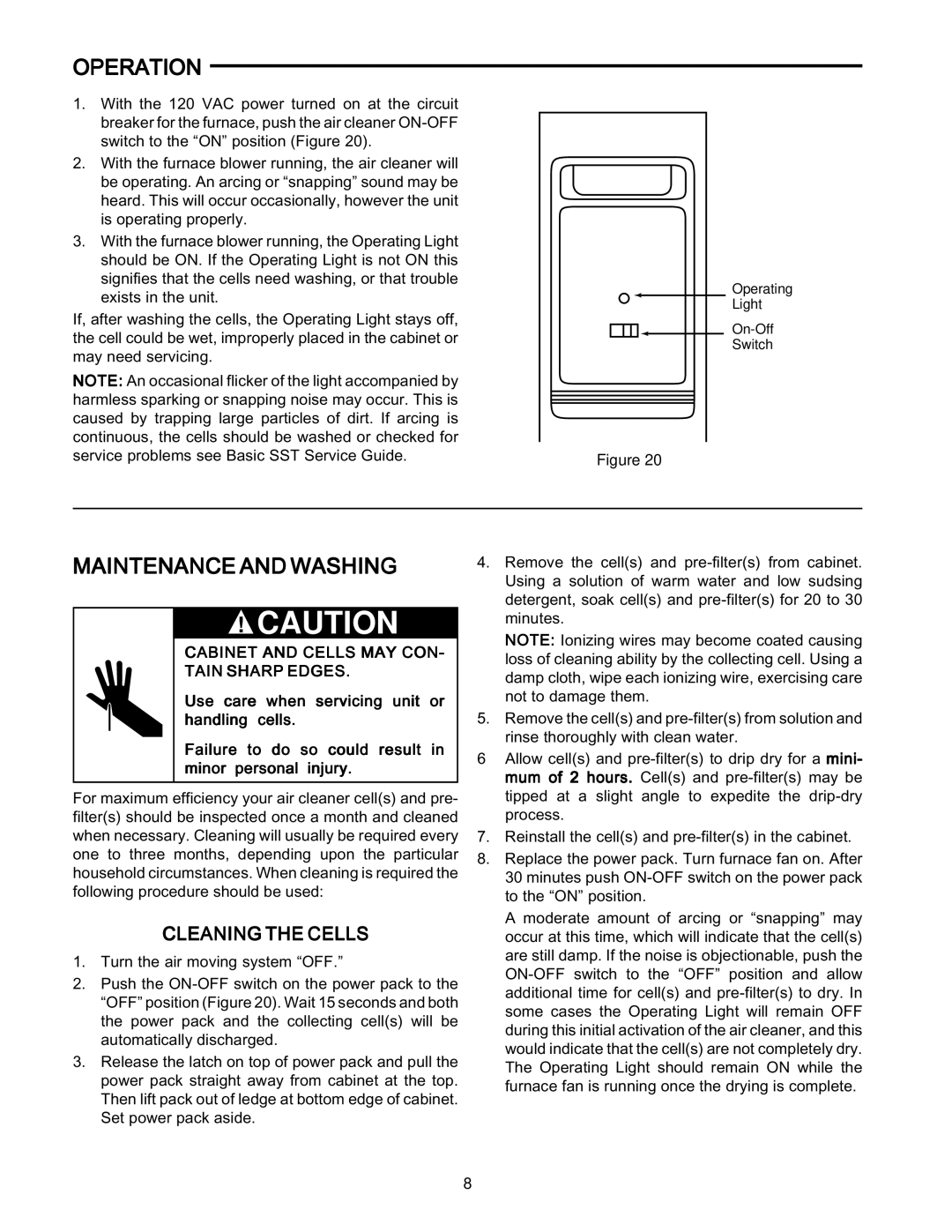SST1600, SST2000, SST1400 specifications
White Rodgers, a renowned name in the HVAC industry, has made significant strides in programmable thermostat technology with its SST series, particularly the SST2000, SST1400, and SST1600 models. These thermostats are designed to enhance comfort while maximizing energy efficiency, making them essential tools for both residential and commercial applications.The SST2000 model stands out with its user-friendly interface, offering a large, backlit display that simplifies programming and adjustments. One of its key features is the four-day programmable schedule, allowing users to customize settings according to their lifestyle. This flexibility ensures optimal heating and cooling, reducing energy costs. The SST2000 also incorporates predictive recovery technology, enabling the system to achieve the desired temperature by the scheduled time, ensuring a comfortable environment without wasting energy.
Moving on to the SST1400, this model is designed for simplicity while maintaining essential programmable features. It also boasts an easy-to-read display and logical button layout for straightforward navigation. With flexible programming options, the SST1400 allows users to set a weekly schedule, accommodating different routines on weekdays and weekends. This model prioritizes energy savings and comfort, offering features like vacation mode, which minimizes energy use when the home is unoccupied.
The SST1600 model takes programmability to the next level with advanced features, including a touchscreen interface. Its smart technology allows for intuitive programming and real-time adjustments, making it suitable for tech-savvy users. The SST1600 can integrate with smart home systems, providing remote access and control via mobile applications. This ensures that homeowners can monitor and adjust their heating and cooling systems from anywhere, enhancing convenience and energy management.
All three models incorporate energy-saving strategies, such as adaptive recovery, which learns how long it takes for the HVAC system to reach the desired temperature, optimizing its performance without user intervention. The thermostats are also compatible with various heating and cooling systems, making them versatile options for diverse setups.
In summary, the White Rodgers SST2000, SST1400, and SST1600 offer distinct features that cater to a range of user preferences. From intuitive displays and programmable schedules to smart technology integration, these thermostats exemplify modern comforts while prioritizing energy efficiency, making them valuable additions to any home or business.

